
Elevating Your Landscape with Evergreen Trees
Published: 22/03/2024 | Updated: 15/05/2024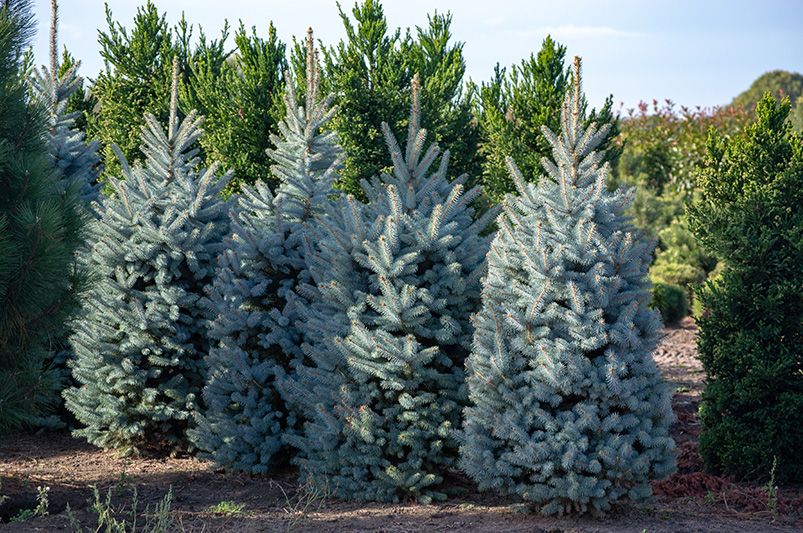
Elevating Your Landscape with Evergreen Trees
If you're aiming to add timeless allure and year-round greenery to your landscape effortlessly, evergreen trees are the perfect choice for your garden. These stalwart beauties boast lush foliage that remains vibrant and verdant throughout the seasons, lending an air of elegance and permanence to any outdoor space.


In this comprehensive guide, we'll delve into the world of evergreen trees, exploring their diverse array of species and sharing expert insights on planting, caring for, and maximizing the beauty of these enduring botanical wonders. Whether you're seeking to create a serene woodland garden or add structure and texture to your landscape design, evergreens offer unparalleled versatility and beauty.
This article is part of our weekly blog series, available for exploration at Shrubhub blog. Dive into a treasure trove of pro tips, recommendations, and budget-friendly ideas on landscaping, complete yard renovations, and garden maintenance from our talented design experts.
Join us as we embark on this journey with evergreen trees, and let's transform your outdoor space into a lush and verdant sanctuary together!
Characteristics of Evergreen Trees
Evergreen trees possess several distinctive characteristics that set them apart from deciduous trees:
-
Year-Round Foliage: One of the most notable features of evergreen trees is their ability to retain foliage throughout the year, providing a constant source of greenery and beauty in the landscape.
-
Needle-like or Scale-like Leaves: Many evergreen trees have needle-like or scale-like leaves, which help them conserve water and withstand harsh environmental conditions such as drought and cold temperatures.
-
Coniferous or Broadleaf: Evergreen trees can be categorized into two main groups: coniferous and broadleaf. Coniferous evergreens, such as pine, spruce, and fir trees, typically have needle-like leaves and produce cones. Broadleaf evergreens, such as holly, magnolia, and laurel trees, have flat, broad leaves.
-
Dense Foliage: Evergreen trees often feature dense foliage that provides excellent coverage and privacy, making them popular choices for hedges, windbreaks, and privacy screens.
-
Cold Hardy: Many evergreen species are adapted to cold climates and can thrive in regions with harsh winters, providing year-round color and interest even in the coldest months.
-
Versatility: Evergreen trees come in a wide range of sizes, shapes, and growth habits, offering versatility in landscaping. From towering pines to low-growing junipers, there's an evergreen tree suitable for every garden style and space.
Understanding these characteristics can help you choose the right evergreen trees for your landscape, whether you're looking to create a formal hedge, add structure to a mixed border, or create a focal point in your garden.
Popular Evergreen Tree Species
Arborvitae Trees: Arborvitae trees, belonging to the genus Thuja, are cherished for their dense foliage and conical shape, making them perfect for privacy screens and hedges. Varieties like Emerald Green Arborvitae and Green Giant Arborvitae are favored for their vibrant green foliage and rapid growth. These trees are relatively low-maintenance and can tolerate various soil types and growing conditions.
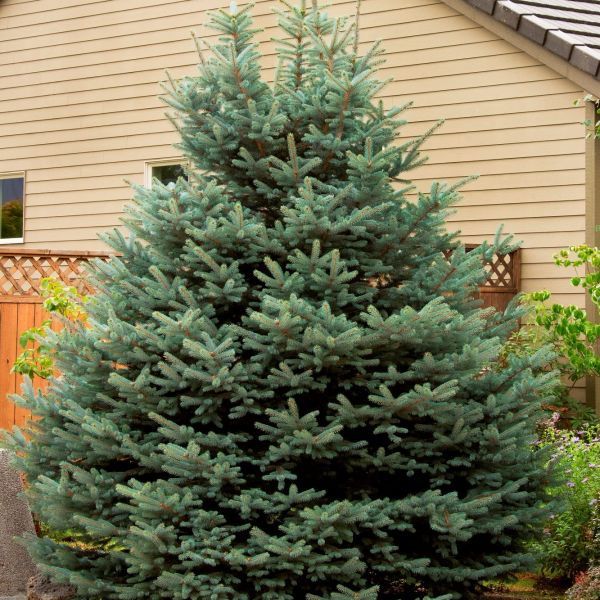
Spruce Trees: Spruce trees boast a classic pyramidal shape and attractive needles ranging in color from deep green to blue-green. Common species include Colorado Blue Spruce, Norway Spruce, and White Spruce, each offering unique characteristics and adaptability to different climates. Spruces are valued for their ornamental appeal and ability to serve as focal points in landscapes while providing habitat for wildlife.

Pine Trees: Pine trees are among the most versatile and widely distributed evergreens globally, with hundreds of species found worldwide. They feature long, slender needles arranged in clusters and distinctive cones. Varieties like Eastern White Pine, Ponderosa Pine, and Scots Pine are prized for their fast growth, adaptability, and resilience to drought and poor soil conditions. Pine trees are valuable for their timber, ornamental value, and use in landscaping.
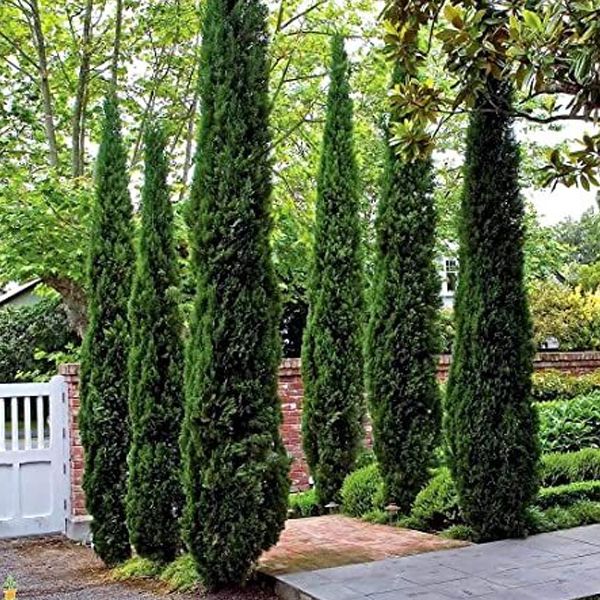
Cypress Trees: Cypress trees are known for their graceful, feathery foliage and distinctive pyramid or columnar shape. Both Bald Cypress and Italian Cypress are popular choices for landscaping due to their rapid growth, drought tolerance, and resistance to pests and diseases. They thrive in moist, well-drained soil and are often used as specimen trees, windbreaks, or screens.
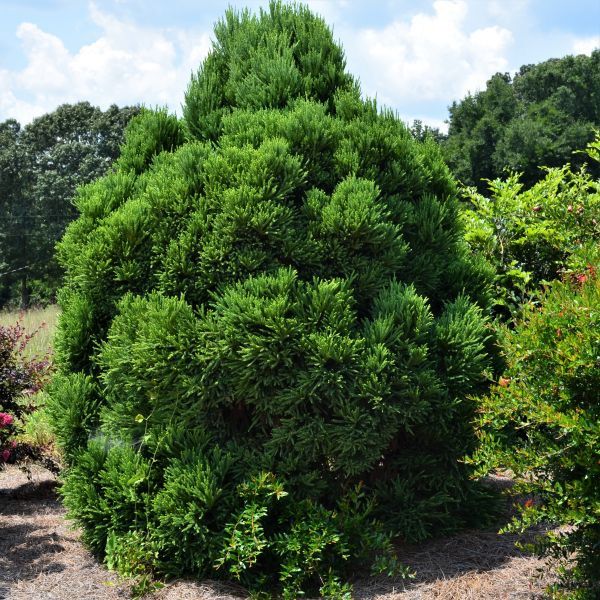
Cedars: Cedar trees, including Eastern Red Cedar and Western Red Cedar, are prized for their aromatic wood, durable timber, and ornamental value. They feature scale-like foliage arranged in dense sprays and produce small cones. Cedars are adaptable to a range of soil types and climates, making them popular choices for hedging, privacy screens, and windbreaks.
Bamboo Trees: Bamboo trees, technically classified as grasses, are renowned for their rapid growth, versatility, and exotic appearance. They feature tall, woody stems (culms) topped with lush, evergreen foliage. Bamboo varieties range from clumping to running types, offering options for both ornamental and functional purposes in the landscape.
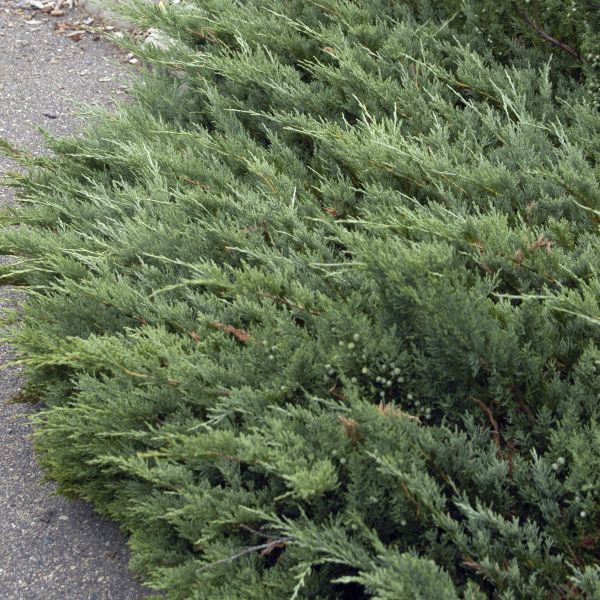
Juniper Trees: Juniper trees encompass a diverse array of species, including groundcovers, shrubs, and trees. They are valued for being drought tolerant, low maintenance, and attractive foliage, which ranges from blue-green to gold. Common varieties such as Blue Rug Juniper, Skyrocket Juniper, and Spartan Juniper are versatile choices in landscaping.
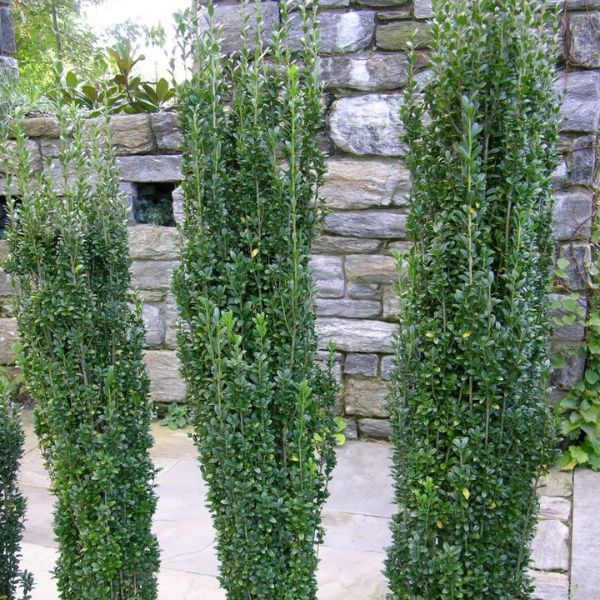
Holly Trees: Holly trees are prized for their glossy, evergreen leaves and vibrant berries, adding color and interest to the landscape, particularly in winter. Varieties like American Holly and English Holly are popular for their ornamental value, adaptability, and tolerance of pruning. They are often used as specimen trees, hedging, or foundation plantings, providing year-round beauty and wildlife habitat.
Planting and Caring for Evergreen Trees
Planting and caring for evergreen trees is essential to ensure their health, longevity, and optimal growth. Here are some key steps to consider:
1. Site Selection:
Choose a suitable location for planting evergreen trees based on their specific sunlight, soil, and space requirements. Consider factors such as sunlight exposure, soil drainage, and proximity to buildings or other structures.
2. Soil Preparation:
Prepare the planting site by loosening the soil and incorporating organic matter such as compost or peat moss to improve soil structure, fertility, and moisture retention. Ensure proper drainage to prevent waterlogging, which can lead to root rot.
3. Planting:
Dig a hole slightly wider and no deeper than the tree's root ball. Carefully remove the tree from its container or burlap wrapping, ensuring the root system remains intact. Place the tree in the center of the hole, backfill with soil, and gently tamp down to remove air pockets. Water thoroughly after planting to settle the soil and promote root establishment.
4. Watering:
Provide adequate water to newly planted evergreen trees, especially during the first growing season, to help them establish a healthy root system. Water deeply and regularly, ensuring the soil remains consistently moist but not waterlogged. Monitor soil moisture levels and adjust watering frequency based on weather conditions.
5. Mulching:
Apply a layer of organic mulch, such as wood chips or bark, around the base of the tree to conserve soil moisture, suppress weeds, and regulate soil temperature. Leave a gap between the mulch and the tree trunk to prevent moisture-related issues and discourage pests and diseases.
6. Pruning:
Prune evergreen trees as needed to maintain their shape, remove dead or diseased branches, and improve air circulation and sunlight penetration. Prune in late winter or early spring before new growth emerges, using sharp, sterile pruning tools to make clean cuts.
7. Fertilizing:
Fertilize evergreen trees sparingly and only if necessary, as they generally have lower nutrient requirements compared to deciduous trees. Apply a balanced, slow-release fertilizer in early spring or late fall, following the manufacturer's recommendations based on tree size and age.
8. Pest and Disease Management:
Monitor evergreen trees regularly for signs of pests, diseases, or other health issues such as discoloration, wilting, or unusual growth patterns. Take prompt action to address any problems, including applying appropriate pesticides or seeking professional assistance if needed.
9. Winter Protection:
Protect newly planted or vulnerable evergreen trees from winter damage, such as drying out or frost cracking, by applying a layer of mulch around the base and wrapping the tree with burlap or tree wrap. Avoid using plastic materials that can trap moisture and cause rot.
By following these planting and care guidelines, you can ensure the health and vitality of your evergreen trees, enhancing the beauty and biodiversity of your landscape for years to come.
Design Ideas and Landscaping Tips with Evergreen Trees
Designing with evergreen trees offers endless possibilities for creating stunning landscapes and functional outdoor spaces. Here are some design ideas and landscaping tips to incorporate evergreen trees, including hedge plants, into your garden:
-
Create Privacy Screens: Evergreen trees, especially tall varieties like arborvitae or Leyland cypress, can be used to create natural privacy screens or living fences along property lines. Plant them in rows to form dense hedges that provide year-round privacy and noise reduction.
-
Define Outdoor Spaces: Use evergreen trees to define different areas of your outdoor living space, such as garden beds, seating areas, or pathways. Planting low-growing evergreens like boxwood or juniper along borders can delineate spaces and add structure to your garden design.
-
Frame Views: Strategically place evergreen trees to frame focal points or scenic views within your landscape. Position them at key vantage points to frame garden features, architectural elements, or distant vistas, adding depth and visual interest to the scenery.
-
Create a Backdrop: Use evergreen trees as a backdrop for other garden plants or focal points such as sculptures, water features, or outdoor structures. Planting tall evergreens like spruce or pine behind smaller plants or decorative elements can create a dramatic backdrop and enhance their visibility.
-
Design with Texture: Incorporate a variety of evergreen tree species with different textures, colors, and growth habits to add visual interest and diversity to your landscape. Mix and match foliage shapes, leaf sizes, and growth forms to create dynamic compositions that engage the senses.
-
Layer Plantings: Create depth and dimension in your garden design by layering evergreen trees with other plants of varying heights and forms. Plant taller evergreens in the background, medium-sized ones in the middle layer, and low-growing shrubs or groundcovers in the foreground to create a sense of depth and complexity.
-
Use Evergreens as Focal Points: Select unique or specimen evergreen trees with distinctive features, such as interesting bark, colorful foliage, or sculptural forms, to serve as focal points in your landscape design. Position them strategically to draw attention and create visual focal points that anchor the garden.
-
Incorporate Hedge Plants: Integrate hedge plants, such as boxwood, yew, or holly, into your landscape design to create formal or informal hedges, borders, or edging. Trim them regularly to maintain desired shapes and sizes, and use them to define garden boundaries, pathways, or outdoor rooms.
By incorporating these design ideas and landscaping tips, you can harness the beauty and versatility of evergreen trees, including hedge plants, to create a stunning and functional outdoor space that enhances your home's curb appeal and complements your lifestyle.
Conclusion
In conclusion, evergreen trees are versatile, low-maintenance additions to any landscape, providing year-round color, texture, and structure. Whether you're seeking privacy, defining outdoor spaces, or adding visual interest to your garden, evergreens offer a wide range of design possibilities.
If you're ready to enhance your outdoor space with evergreen trees and other landscaping elements, ShrubHub is here to help. Explore our collection of high-quality trees, shrubs, and groundcovers, and discover 3D custom designs tailored to your yard's unique needs and aesthetic preferences.
From creating lush native gardens to incorporating hedge plants for privacy and structure, ShrubHub offers everything you need to transform your outdoor space into a beautiful and functional retreat. Contact us today to start your landscaping journey with ShrubHub!


